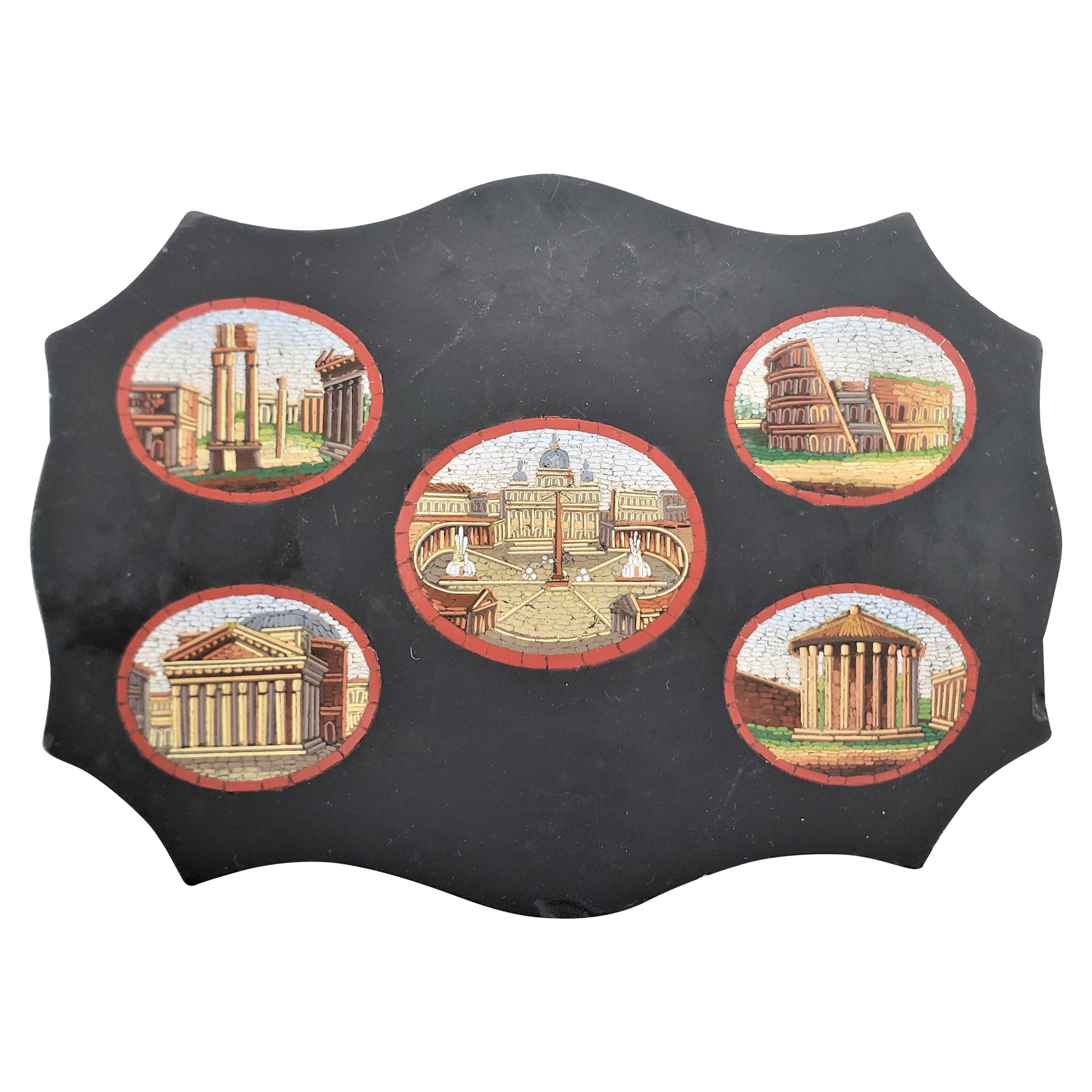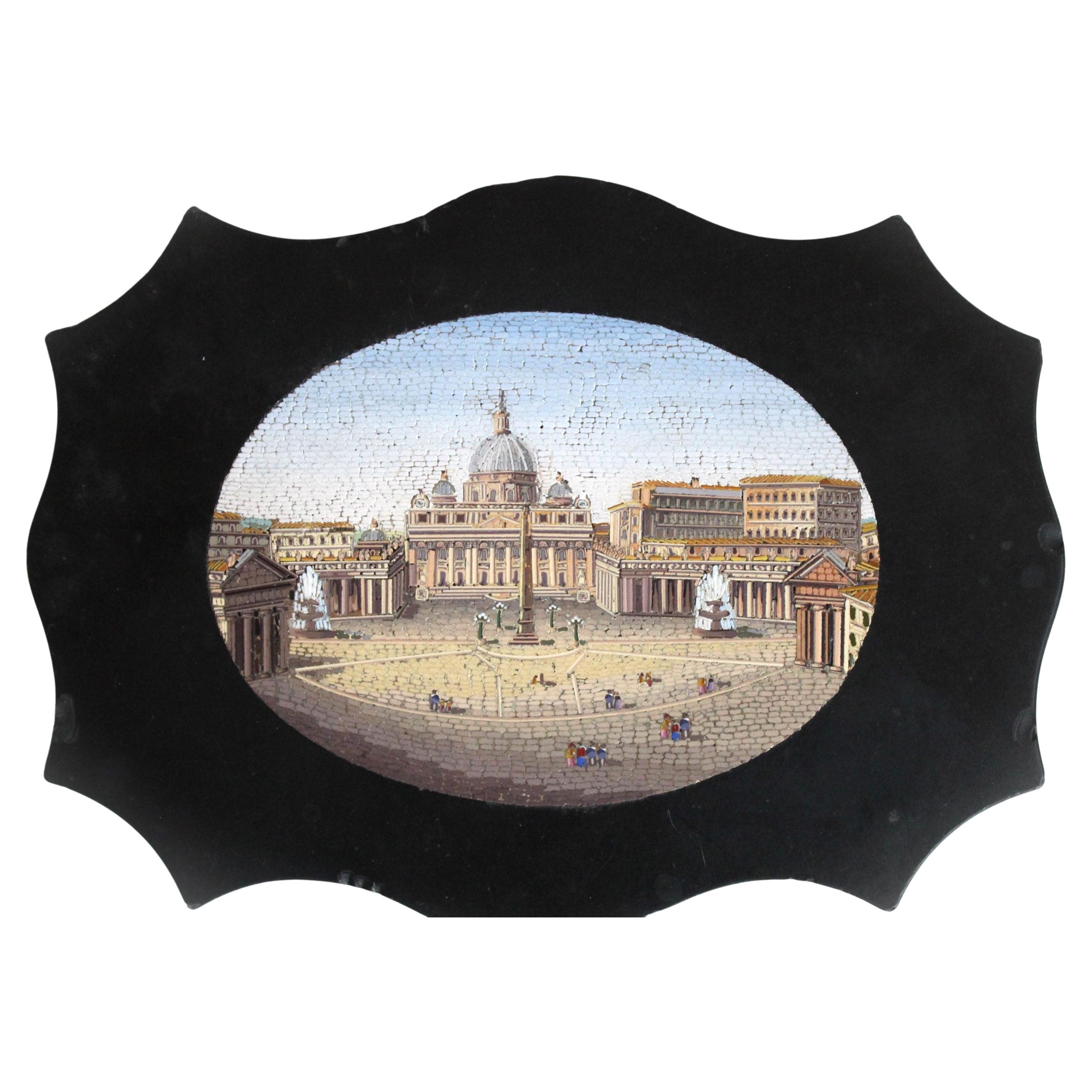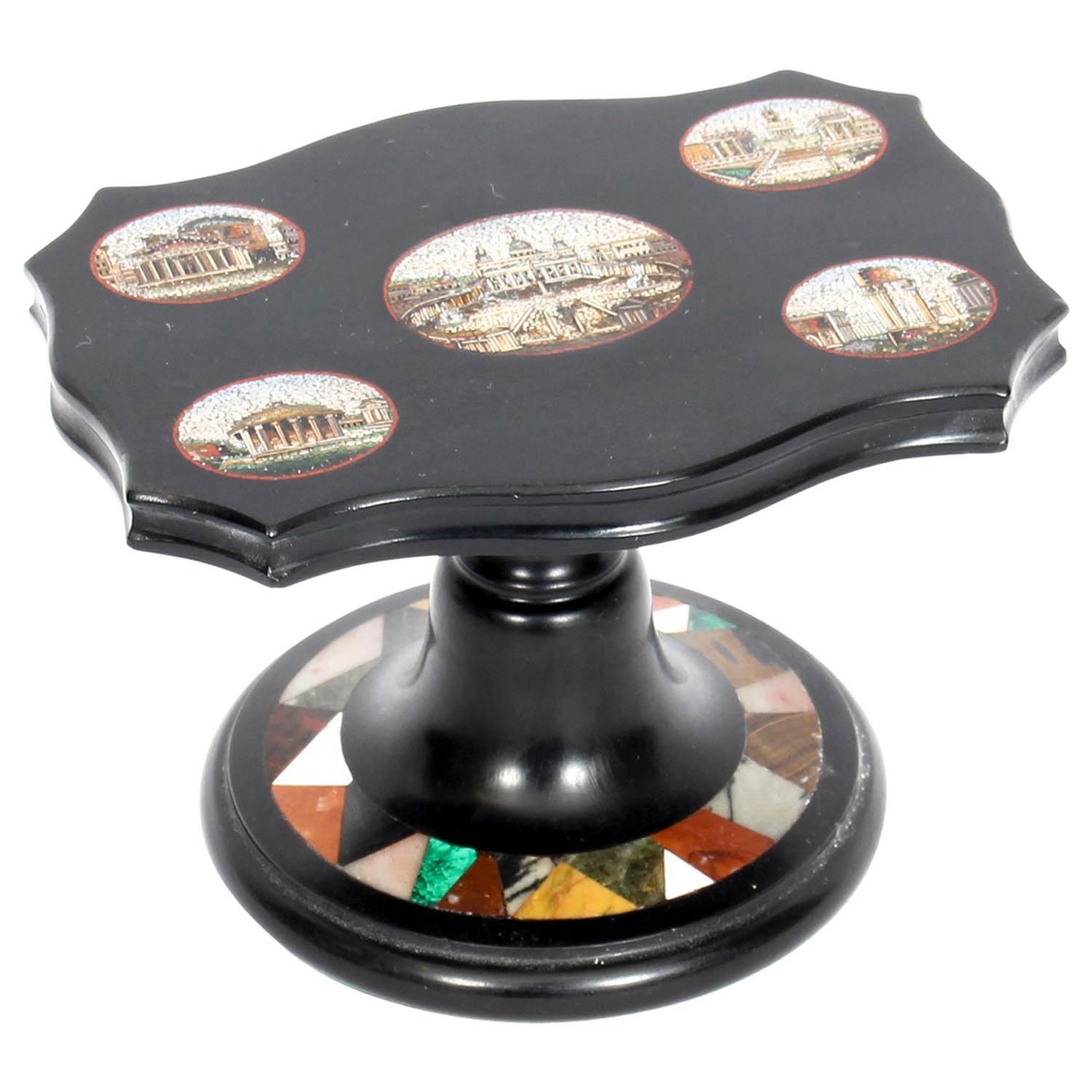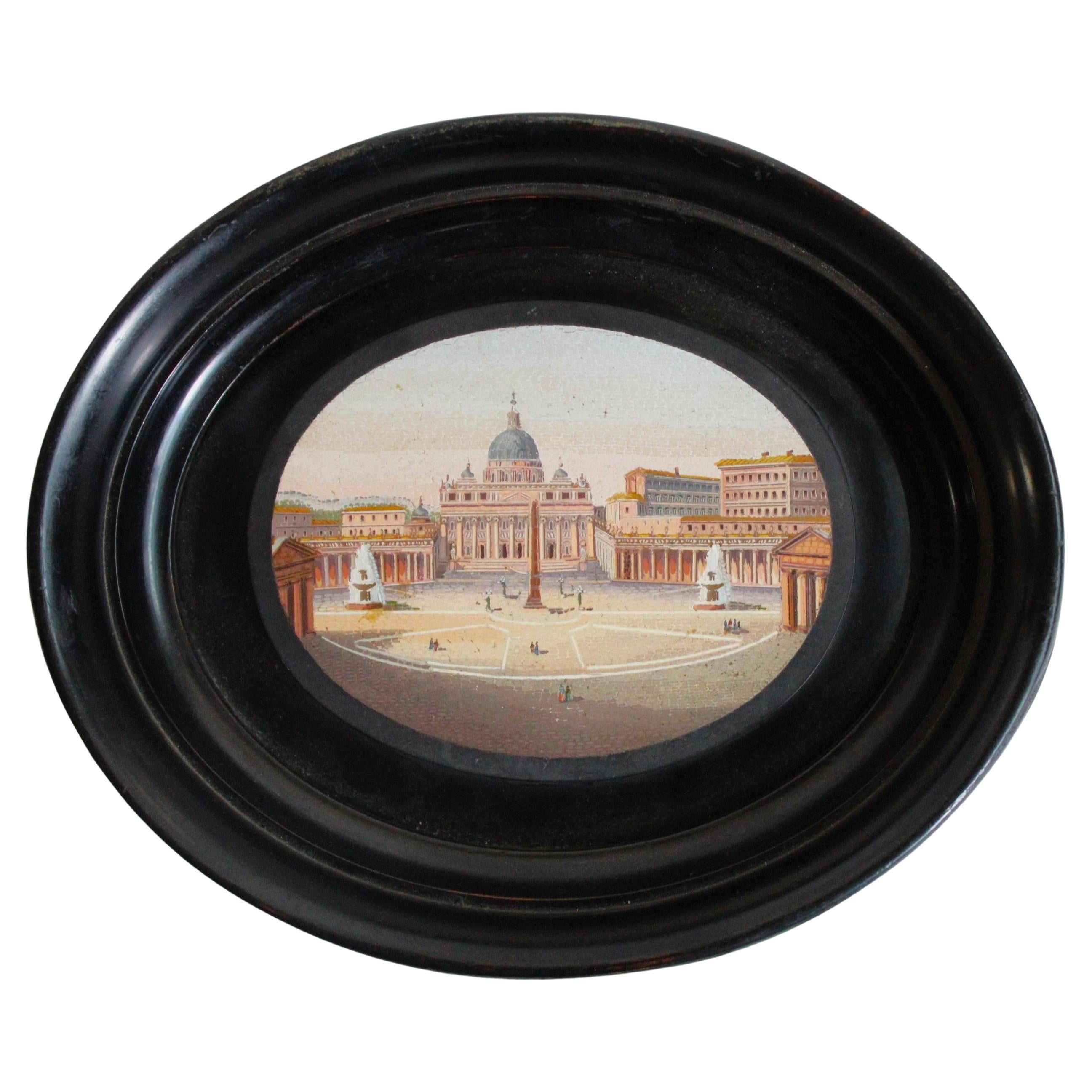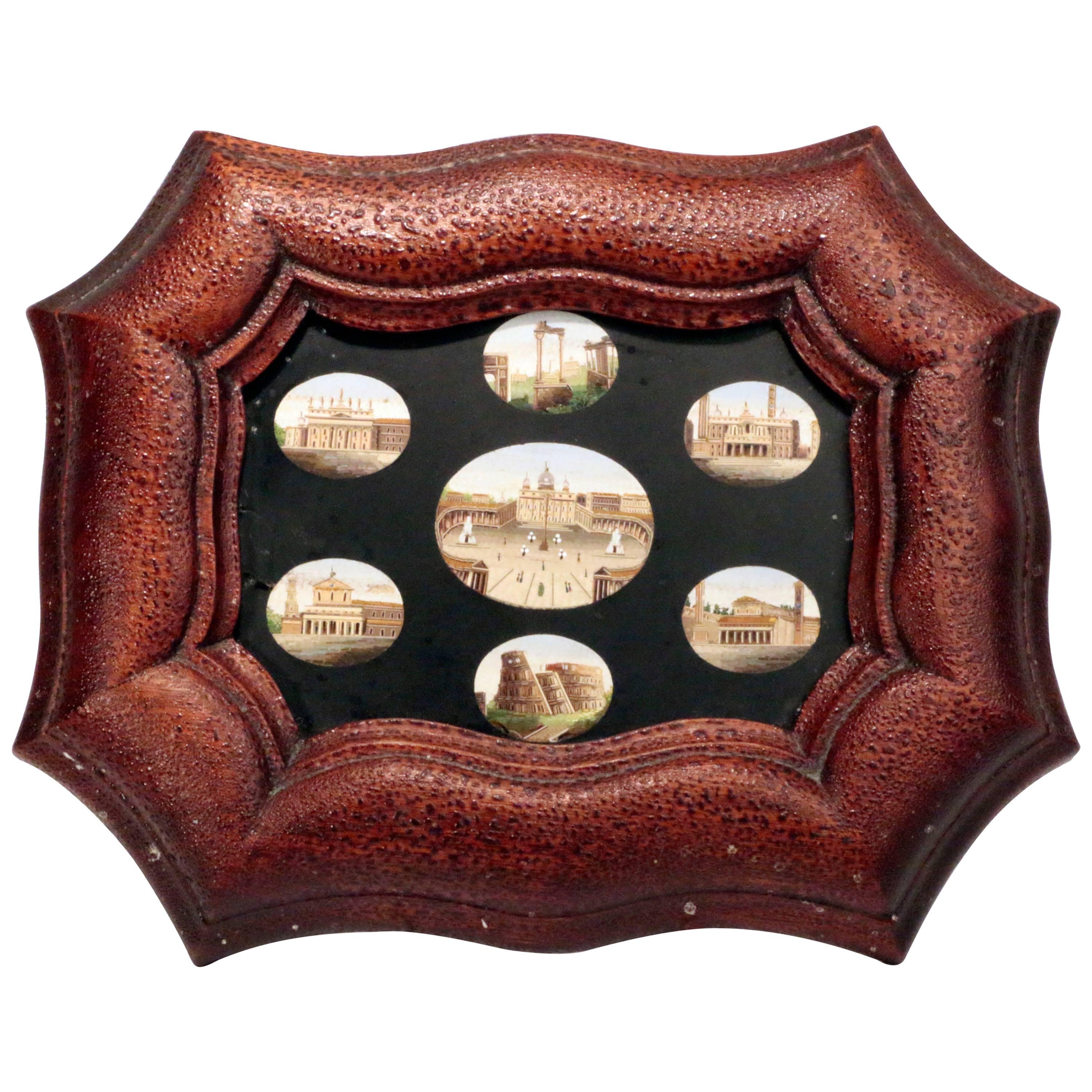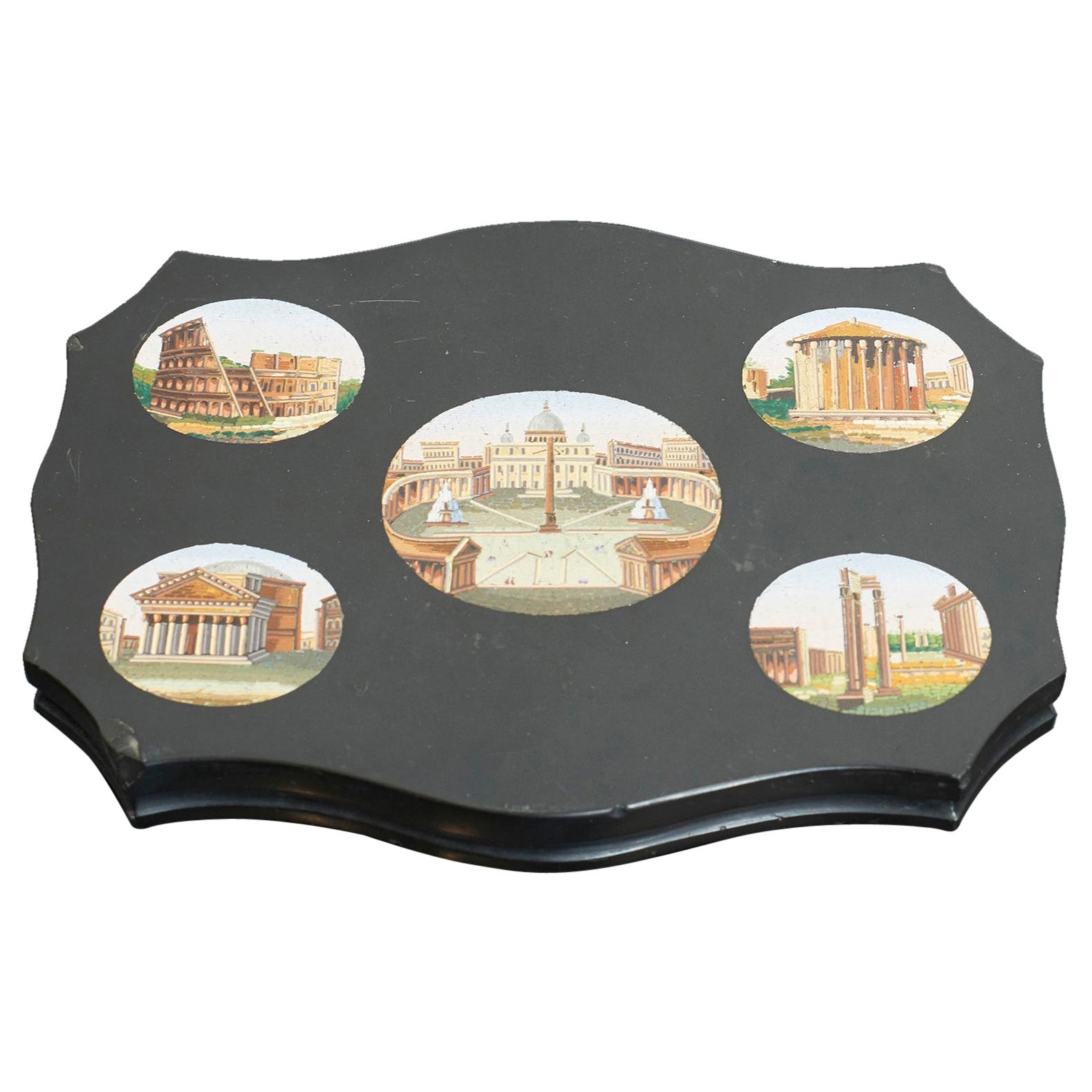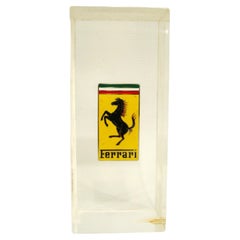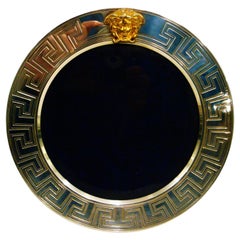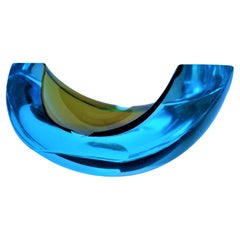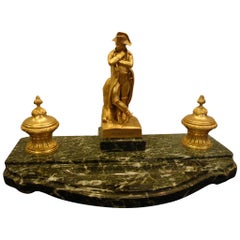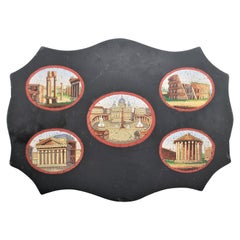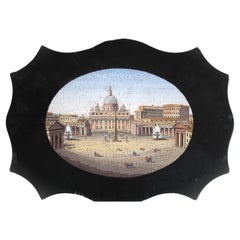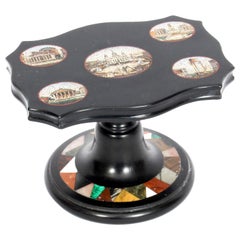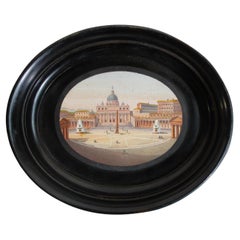Objekte ähnlich wie A Grand Tour Micro Mosaic Briefbeschwerer, Petersplatz Rom - Vatikan
Möchten Sie mehr Bilder oder Videos?
Zusätzliche Bilder oder Videos von dem*der Anbieter*in anfordern
1 von 12
A Grand Tour Micro Mosaic Briefbeschwerer, Petersplatz Rom - Vatikan
1.753,91 €
Angaben zum Objekt
"Micro Mosaic, St. Peter's Basilica in Rome, XIXth Century"
19th century oval Micro-mosaic depicting a panoramic view of the basilica and St. Peter's Square in Rome (Vatican), enclosed in a shaped slate with inset oval plaque.
Original Italian Micro Mosaic Grand Tour desk paperweight plaque.
We have specialized in the sale of Art Deco and Art Nouveau and Vintage styles since 1995. If you have any questions we are at your disposal. Pushing the button that reads 'View All From Seller'. And you can see more objects to the style for sale. Why are there so many antiques in Argentina?
In the 1880 – 1940 there was a grate wave of immigration encouraged by the periods of war that were taking place. 1st World War took place between 1914 and 1918 2nd World War took place between 1939 and 1945 The immigrants options were New York or Buenos Aires. Tickets were cheap and in Buenos Aires they were welcomed with open arms, as it was a country where everything was still to be done. Argentina was the country of new opportunities, labour was needed and religious freedom was assured, in many cases the of the family travel first until they were settled and then the rest of the family members join them. In the immigrant museum “Ellis Island Immigrant Building” in New York you can se the promotional posters of the boats that would take them to a new life. Between the years 1895 and 1896, Argentina had the highest DGP (gross domestic product) per capita in the world according to the Maddison Historical Statistics index, this situation arose due to the large amount of food being exported to European countries, which were at war. The Argentinean ships left the port of Buenos Aires with food, but they returned with furniture, clothes and construction elements, (it´s common to see this the old buildings of the historic neighbourhood of San Telmo, the beams with the inscription “Made in England)”, as well as many markets that were built in Buenos Aires, such us the San Telmo Market, whose structure was brought by ship and afterwards assembled in 900 Defensa Street. With the great influence of European immigrants living in the country, the children of the upper classes travelled to study in France, resulting in the inauguration of “La Maison Argentinienne”, on 27th of June 1928, in the international city of Paris, which hosted many Argentinians that were studying in Frace. It´s the fourth house to be built after France, Canada and Belgium, being the first Spanish-speaking one. Still in place today (17 Bd Jourdan, 75014, Paris, France). Many of the children of these wealthy families who attended international art exhibitions, museums and art courses abroad, took a keen interest in the European style. This is why Buenos Aires was at the time referred as “The Paris of South America”. Between the years 1890 and 1920 more than a hundred Palaces were built on Alvear Avenue the most exclusive avenue in Buenos Aires. Today some of these palaces have been transformed into museums, hotels and embassies. In the year 1936, the Kavanagh building was inaugurated, it was the tallest reinforced concrete building in South America. During 1994 the American Society of Civil Engineers distinguished it as an “international engineering milestone”, and it´s now considered a World Heritage of Modern Architecture. At the time was common to hire foreign architects such as Le Corbusier, who visited Buenos Aires/Argentina in 1929 and in 1948 he drew up the blueprints for a house built in La Plata City (which was declared a World Heritage Site). In 1947, the Hungarian architect Marcelo Breuer designed “Parador Ariston” in the seaside city of Mar del Plata. After an Argentinean student at Harvard University convinced him to come to Argentina. He worked on an urban development project in the Casa Amarilla, area of La Boca. The Ukrainian architect, Vladimiro Acosta, arrives in Argentina in 1928 and worked as an architect until que moved to Brazil. Antonio Bonet, a Spanish architect who worked with Le Corbusier in Paris, arrives in Argentina in 1937, where he carried out several architectural works and in 1938 designs the well-known BFK chair. Andres Kálnay, of Hungarian origin, made around 120 architectural masterpieces, among which the former Munich brewery stands out, he even made the furniture’s design. The German architect, Walter Gropius, director of the Bauhaus, lived in Argentina, where he wrote articles for “Sur” magazine and founded in Buenos Aires, an architectural firm with Franz Möller, who was also an architect, where he built two houses. At the same time several famous designers decided to immigrate to Argentina, among them we can find the well-known French designer, Jean-Michel Frank, who arrived in the country in 1940 and also worked for the Rockefeller family. Special pieces were made, which were sold exclusively in the country, such as the well-known German company “WMF”, who sold their products by catalogue, which were chosen by the ladies of high society in the list of wedding gifts, as well as the pieces designed by Christofle. The Swiss sculptor Alberto Giacometti, made special pieces for Argentinean mansions. In 1904 the first Jansen branch outside Paris was established in Buenos Aires, as the Argentinean clientele demanded a large amount of furniture, from the end of the 19th century to the mid-20th century. In 1970, the brand Rigolleau Argentina made pieces authorised by Lalique. The brands Maple and Thompson also set up shop in the country. The French plastic artist, Marcel Duchamp moved to Argentina in 1918-1919. Glass signed Gallé, Charder, Leverre, Schneider, Muller and other French firms. They were bought in flower shops and were given to ladies with beautiful floral arrangements. Some furniture manufacturers travelled to international fairs and bough the patterns to produce the furniture in Argentina, such as the furniture firm Englander and Bonta, who bought the patterns in Italy. It is worth mentioning that in Argentina we have the largest community of Italians outside of Italy, as it is estimated that 70 percent of the inhabitants have at least one Italian descendant, followed by Spanish immigrants. The most Important furniture stores in Argentina: Comte is founded in 1934 (under the direct management of Jean Michel Frank in 1940). Nordiska (Swedish company established in 1934). Churba in 1960, a company that brought foreign designers to present their furniture in the country: Denmark: (Arne Jacobsen, Finn Juhl, Bender Madsen, Ejner Larsen, Poul Kjaerholm, Hans Wegner) Sweden: (Hans Agne Jakobsson, Gustavsberg) United States: (Herman Miller) Finland: (Lisa Johansson, Folke Arstrom, Tapio Wirkkala, Alvar Aalto, Timo Sarpaneva) Swedish Factory: (Orrefors) Italy: (Littala, Vico Magistretti, Emma Gismondi, Gae Aulenti, Angelo Mangiarotti, Elio Martinelli, Gianna Celada, Angelo Mangiarotti, Mario Bellini, Carlo Scarpa) Finland: (Olivia Toikka) Plata Lappas (Lappas Silver): a goldsmith shop founded in 1887 in Argentina by Alcibiades Lappas of Greek origin. In 2019, in Argentina took place “the Art Deco world congress” . Argentina currently has more than 100 Art Deco buildings and another 90 Art Nouveau buildings throughout the city of Buenos Aires. Argentina is a country that has not been involved in many wars, which is why it has been a refuge for works of art and antiques from different periods of time, unlike European countries. That is way many collectors, museums and antique dealers from all over the world visit it, you should not miss the opportunity to visit this great country.
- Maße:Höhe: 17 cm (6,7 in)Breite: 25,5 cm (10,04 in)Tiefe: 1,8 cm (0,71 in)
- Stil:Grand Tour (Aus dem Zeitalter)
- Materialien und Methoden:Marmor,Mosaik
- Herkunftsort:
- Zeitalter:
- Herstellungsjahr:1870
- Zustand:Abnutzung dem Alter und der Nutzung entsprechend.
- Anbieterstandort:Buenos Aires, AR
- Referenznummer:1stDibs: LU2027344889902
Anbieterinformationen
4,9
Geprüfte*r Anbieter*in
Jede*r Anbieter*in erfüllt strenge Standards bezüglich Echtheit und Zuverlässigkeit
Gründungsjahr 2002
1stDibs-Anbieter*in seit 2016
322 Verkäufe auf 1stDibs
Typische Antwortzeit: 1 Stunde
- VersandAngebot wird abgerufen …Versand von: Buenos Aires, Argentinien
- Rückgabebedingungen
Einige Inhalte dieser Seite wurden automatisch übersetzt. Daher kann 1stDibs nicht die Richtigkeit der Übersetzungen garantieren. Englisch ist die Standardsprache dieser Website.
Authentizitätsgarantie
Im unwahrscheinlichen Fall eines Problems mit der Echtheit eines Objekts kontaktieren Sie uns bitte innerhalb von 1 Jahr für eine volle Rückerstattung. DetailsGeld-Zurück-Garantie
Wenn Ihr Objekt nicht der Beschreibung entspricht, beim Transport beschädigt wurde oder nicht ankommt, kontaktieren Sie uns bitte innerhalb von 7 Tagen für eine vollständige Rückerstattung. DetailsStornierung innerhalb von 24 Stunden
Sie können Ihren Kauf jederzeit innerhalb von 24 Stunden stornieren, ohne jegliche Gründe dafür angeben zu müssen.Geprüfte Anbieter*innen
Unsere Anbieter*innen unterliegen strengen Dienstleistungs- und Qualitätsstandards, wodurch wir die Seriosität unserer Angebote gewährleisten können.Preisgarantie
Wenn Sie feststellen, dass ein*e Anbieter*in dasselbe Objekt anderswo zu einem niedrigeren Preis anbietet, werden wir den Preis entsprechend anpassen.Zuverlässige weltweite Lieferung
Unsere erstklassigen Versandunternehmen bieten spezielle Versandoptionen weltweit, einschließlich individueller Lieferung.Mehr von diesem*dieser Anbieter*in
Alle anzeigenVintage Ferrari Cars Badge / Emblem Lucite-Schreibtisch-Briefbeschwerer aus Lucite. Italien 1970er Jahre
Vintage Ferrari Abzeichen / Emblem Lucite Schreibtisch Briefbeschwerer. Italien 1970er Jahre.
Sehr schöner Ferrari Werbebriefbeschwerer.
Seit 1995 haben wir uns auf den Verkauf von...
Kategorie
Ende des 20. Jahrhunderts, Italienisch, Moderne der Mitte des Jahrhunder...
Materialien
Lucite
Gianni Versace Sterling Silber Runde Fotografie / Foto / Bilderrahmen 1990er Jahre
Von Gianni Versace
Iconic Gianni Versace Große Runde Sterling Silber Foto / Foto / Bilderrahmen, mit griechischen Schlüssel graviert Grenze und vergoldetem Metall Versace Medusa Maske auf der Oberseite...
Kategorie
1990er, Italienisch, Neugriechisch, Bilderrahmen
Materialien
Sterlingsilber
1.754 € Angebotspreis
25 % Rabatt
Large Cenedese Italian Sommerso Murano Glass Ashtray, Italy 1960´s
Von Cenedese
Großer Cenedese Italienischer Sommerso Murano Glas Aschenbecher. Italien 1960er Jahre
Diese große, schwere Glasscheibe in Sommerso-Technik weist ein ungewöhnliches Design auf.
Es sie...
Kategorie
Mitte des 20. Jahrhunderts, Italienisch, Moderne der Mitte des Jahrhunde...
Materialien
Muranoglas
Napoleon Bronze-Skulptur-Schreibtisch-Tintenfass, signiert Emile Pinedo
Von Émile Pinedo
Napoleon-Bonaparte-Schreibtisch-Tintenfass aus Bronze, signiert Pinedo mit Gießereimarke. Montiert über einem grünen Alpenmarmor.
Antike signiert 19. große Bronze Goldauflagen Nap...
Kategorie
Antik, 1890er, Französisch, Empire, Tintenfässer
Materialien
Bronze
Barovier Toso Italienisches Vintage Kunstglas Rostrato Murano Vase / Schale, ca. 1938
Von Ferro Toso Barovier, Ercole Barovier
Barovier Toso Italienische Vintage Kunstglas Rostrato Murano Vase / Schale, circa 1938
Ein exquisiter Tafelaufsatz von Barovier & Toso aus mun...
Kategorie
Mitte des 20. Jahrhunderts, Italienisch, Moderne der Mitte des Jahrhunde...
Materialien
Muranoglas
1.544 € Angebotspreis
20 % Rabatt
Jugendstil – Art & Craft Sterlingsilber-Emaille-Fotorahmen, Cymric 1903
Von Liberty & Co., Archibald Knox, William Hair Haseler
Art Nouveau - Art & craft Sterling Silber Emaille Fotorahmen - William Hutton & Sons 1903.
Quadratischer Fotorahmen aus Silber und Emaille von William Hutton & Sons, das Design wird ...
Kategorie
Frühes 20. Jahrhundert, Britisch, Arts and Crafts, Sterlingsilber
Materialien
Sterlingsilber, Emaille
Das könnte Ihnen auch gefallen
Antiker Grand Tour Mikro-Mosaik Briefbeschwerer mit Vatikan Vignetten
Dieser antike Grant Tour Mikro-Mosaik-Briefbeschwerer ist unsigniert, stammt aber vermutlich aus Italien oder möglicherweise aus der Vatikanstadt und wurde um 1880 im viktorianischen...
Kategorie
Antik, Spätes 19. Jahrhundert, Italienisch, Viktorianisch, Briefbeschwerer
Materialien
Schiefer
Papierbeschwerer aus Mikromosaik St. Peter's Square
Mikro-Mosaik-Briefbeschwerer mit der Darstellung des Petersplatzes. ZUSÄTZLICHE FOTOS, INFORMATIONEN ÜBER DAS LOS UND VERSANDINFORMATIONEN KÖNNEN PER E-MAIL ANGEFORDERT WERDEN
Tags:...
Kategorie
Mitte des 20. Jahrhunderts, Italienisch, Bilderrahmen
Materialien
Edelstein
Antike Grand Tour Italienisch Vatikan Mikro-Mosaik Marmor Schreibtisch Gewicht 19. Jahrhundert
Dies ist eine atemberaubende dekorative antike italienische Grand Tour Vatikan Mikro-Mosaik eingelegt schwarzem Marmor Schreibtisch Gewicht, in Form einer Miniatur-Tabelle, ca. 1870 ...
Kategorie
Antik, 1870er, Italienisch, Briefbeschwerer
Materialien
Achat, Malachit, Onyx, Granit, Marmor, Porphyr
St. Peter's Square aus Mikromosaik
Hochwertiges Mikromikro-Mosaik, das den Petersplatz darstellt. ZUSÄTZLICHE FOTOS, INFORMATIONEN ÜBER DAS LOS UND VERSANDINFORMATIONEN KÖNNEN PER E-MAIL ANGEFORDERT WERDEN
Tags: Mik...
Kategorie
Mitte des 20. Jahrhunderts, Italienisch, Bilderrahmen
Materialien
Edelstein
Hervorragende Qualität Antike Mikro-Mosaik Grand Tour Andenken an einen Besuch in Rom
Hervorragende Qualität antiken Mikro-Mosaik Grand Tour Souvenir eines Besuchs in Rom. mit sieben Tafeln, Vignetten von römischen Ansichten in einer geformten Schieferplatte. und in O...
Kategorie
Antik, 19. Jahrhundert, Italienisch, Grand Tour, Dekorative Kunst
Materialien
Marmor, Schiefer
19. Jahrhundert Grand Tour Mikro-Mosaik-Tafel mit römischen Ansichten
19. Jahrhundert Mikro-Mosaik-Tafel mit fünf ovalen Tafeln mit römischen Ansichten, ca. 1860-1880.
Sehr feine Mosaiksteine und kleine Briketts aus Halbedelsteinen, eingelegt auf schw...
Kategorie
Antik, 19. Jahrhundert, Italienisch, Grand Tour, Wandskulpturen
Materialien
Stein, Marmor
